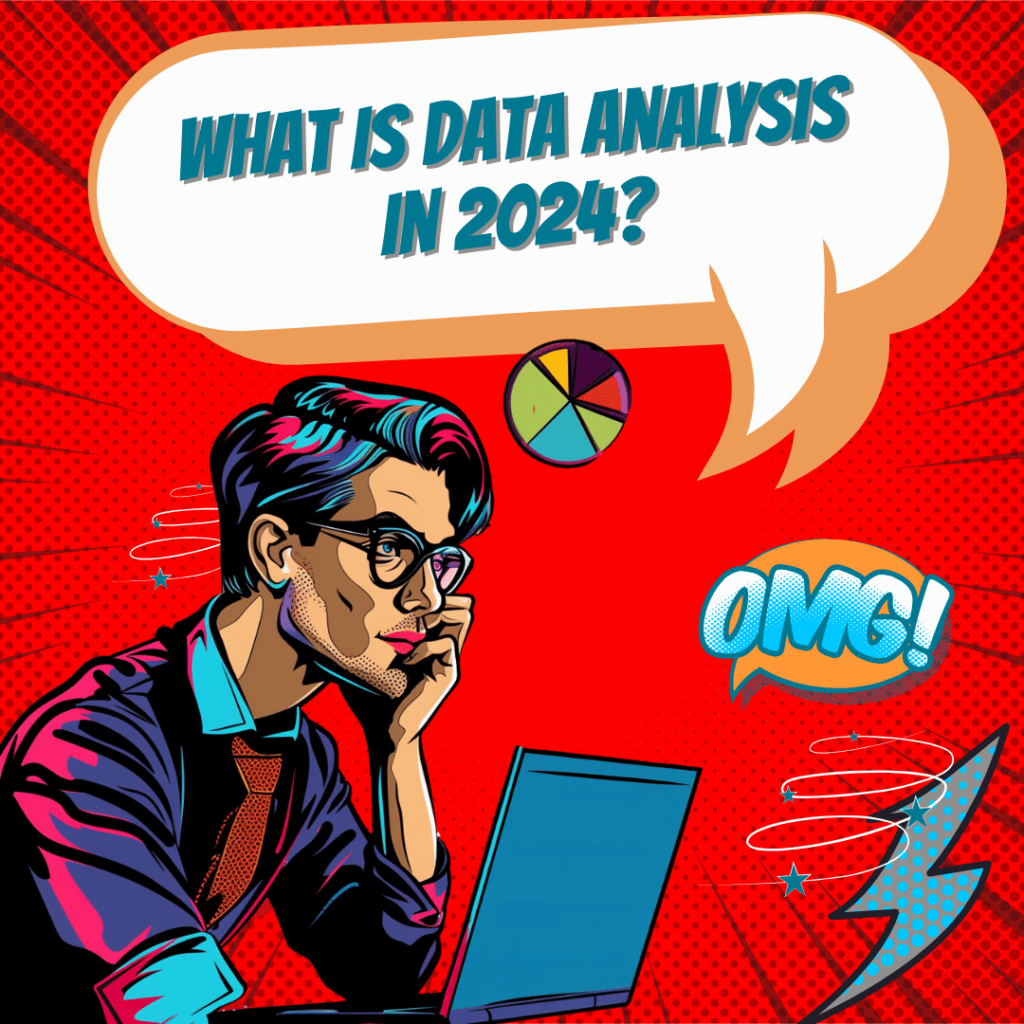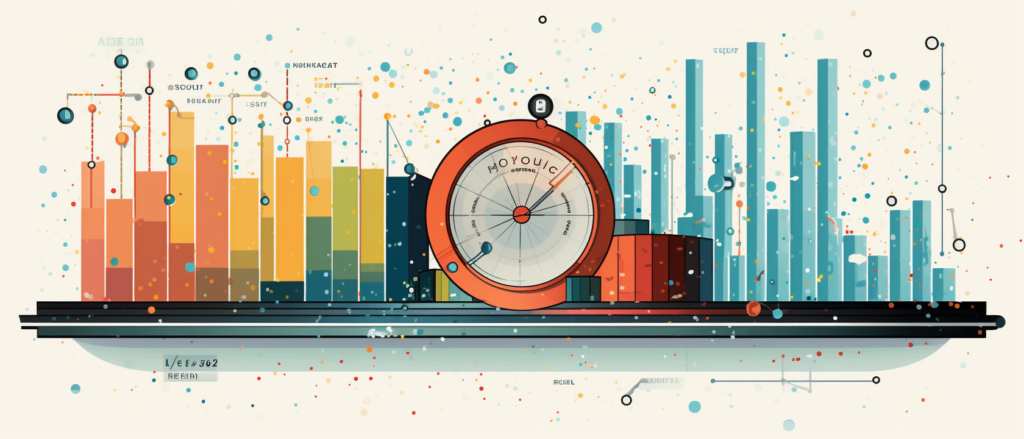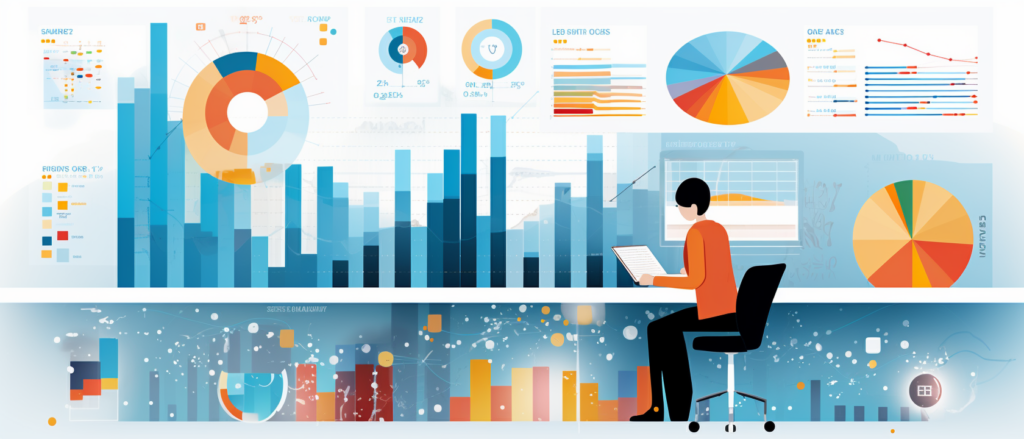Key Takeaways
✅ Understanding Through Insight: Data analysis is essential for converting raw data into meaningful insights, which serve as the foundation for strategic decision-making.
✅ Strategic Optimization: Organizations rely on data analysis to identify improvement areas in their operations, ultimately aiding in the optimization of both products and services.
✅ Problem Identification: Data analysis shines a light on underperformance and potential areas for expansion, acting as a guide for problem-solving and innovation.
Introduction
In an increasingly data-driven world, the ability to analyze vast amounts of information has become crucial to success. From small businesses to global corporations, data is the foundation upon which strategic decisions are built. But data on its own is raw and unrefined; without proper analysis, it's like having a gold mine and not knowing how to extract the gold. This is where data analysis comes into play, serving as the pickaxe and blueprint for uncovering the golden insights buried within digital datasets.
Simply put, data analysis is a detective's toolkit, designed for the world of numbers and charts. It aids in dissecting data, scrubbing off the irrelevant bits, enriching what's important, and ultimately sculpting it into a form that makes sense to decision-makers. This intricate process isn't random—it's a thoughtful sequence of steps that includes prepping and poking through data, creating models to understand it, and finally, visually presenting it.
At its core, data analysis is a clear lens that brings the blurry picture of raw data into focus. For businesses and organizations, it shines a light on unseen patterns, like tracing the steps of customers or the rhythm of market trends. By harnessing this power, data stops being a stream of incomprehensible figures and starts becoming a source of actionable insights. It spotlights issues that need addressing and uncovers paths to new opportunities. Moreover, it's like a compass after strategic actions are taken, indicating whether the chosen course leads to the intended destination or if a course correction is necessary.
Techniques and Tools
Traversing the terrain of data analysis involves several maps and compasses, each with its own use case:
1. Descriptive statistics: Imagine being able to summarize the ocean's depths in a single page. Descriptive statistics does that for data, capturing its essence through measures like averages and variability.
2. Inferential statistics: It's like predicting tomorrow's weather by studying a handful of leaves; this branch of statistics makes educated guesses about a whole population using just a sample of data.
3. Machine learning algorithms: Picture having a crystal ball that learns over time. These algorithms spot intricate data connections and predict future events based on learned patterns.
4. Data visualization: It turns complex data forests into digestible visual graphs and charts, telling the story of the data in a captivating and understandable way.
Data Analysis Definition
Data analysis is the systematic approach to processing and evaluating data to extract meaningful insights and information. This involves various stages, starting with the initial gathering and ends with the transformation of data into a meaningful story. The process can be broken down into key phases:
- Data Preparation: The stage where data is cleaned and organized. This includes dealing with missing values, outliers, and errors to ensure the data's quality before analysis.
- Data Exploration: At this phase, analysts explore the data sets through various techniques to understand underlying patterns, anomalies, or correlation between variables.
- Data Modeling: In this step, analysts apply statistical or machine learning models to the data to identify trends, predict outcomes, or classify data points.
- Data Visualization: Involves presenting data in graphical formats, making complex data more accessible and understandable for stakeholders.
Importance of Data Analysis
The significance of data analysis can be encapsulated in several key points:
- Informed Decision Making: It enables businesses and organizations to make evidence-based decisions, reducing the risks associated with reliance on intuition or assumptions.
- Identification of Trends and Patterns: Analysis helps in spotting trends and patterns that can drive strategic initiatives and competitive intelligence.
- Identification of Problems and Opportunities: Through analysis, businesses can pinpoint areas of weakness or potential for growth, allowing for proactive management.
- Impact Measurement: It helps in evaluating the effectiveness of business strategies or interventions by comparing pre- and post-implementation data.
- Efficiency Improvement: By understanding operational data, organizations can streamline processes, reduce waste, and optimize resource allocation.
AI Marketing Engineers Recommendation
In today's highly competitive business landscape, the capacity to effectively acquire, analyze, and utilize data is not just an advantage; it is imperative for survival and growth. Data analysis involves examining, cleansing, transforming, and modeling data to discover useful information, informing conclusions, and supporting decision-making. As AI Marketing Engineers, we understand the nuances that come with this invaluable practice.
1. Data Collection Fidelity: Prioritize the integrity of your data collection. Ensure the sources are reliable and the collection methods provide high-quality, representative data. Incomplete or biased data will lead to flawed analyses.
2. Utilize Advanced Analytics Tools: Harness the power of contemporary analytical tools and software, which leverage artificial intelligence and machine learning to derive insights from big data more effectively than traditional statistical methods.
3. Predictive Analytics: Go beyond descriptive analytics - which only summarize past data - and invest in predictive models to forecast future trends and customer behaviors. This foresight can be a game-changer for market strategy.
4. Personalization and Segmentation: Use data to understand your audience at a granular level. By leveraging segmentation, you can provide personalized experiences, products, and services that directly meet the unique needs of different customer groups.
5. Real-time Data Processing: In the age of immediacy, the ability to analyze and react to data in real-time can be a competitive edge. This allows for rapid response to market changes and can enhance customer interactions.
6. Data Visualization: Often, the most compelling way to gain stakeholder buy-in and effectively communicate findings is through data visualization. Utilizing dashboards and infographics can make complex data more accessible and actionable.
7. Continuous Learning and Adaptation: As markets evolve, so should your data analysis strategies. Continually refine your models and approaches based on new data and outcomes.
By integrating these data analysis practices, businesses can expect to see an enhancement in their marketing strategies, customer satisfaction, and ultimately, their bottom lines. AI Marketing Engineers stands by the philosophy that comprehensive and intelligent use of data analysis is the cornerstone of effective decision-making in the ever-evolving marketing landscape.
Conclusion
In conclusion, data analysis stands as the backbone of informed decision-making in today's data-driven world. Throughout this article, we've explored the multifaceted nature of data analysis, highlighting its integral role in helping organizations understand and leverage their data to achieve strategic objectives. It's a systematic process that goes beyond mere number-crunching; it encompasses a series of critical steps such as data preparation, exploration, modeling, and visualization, each designed to distill raw data into actionable insights.
By utilizing a combination of techniques and tools—ranging from descriptive and inferential statistics to advanced machine learning algorithms and visualizations—data analysis equips organizations with the power to not only comprehend the current state of affairs but to forecast future trends, pinpoint opportunities for growth, and assess the impact of strategic maneuvers.
The importance of data analysis cannot be overstated. It enables organizations to uncover hidden patterns, identify market trends, understand customer behavior, evaluate the competition, and much more. Armed with this knowledge, businesses can make calculated choices that propel them ahead of their competitors and ensure long-term success.
FAQs
Question 1: What is data analysis?
Answer: Data analysis is the process of processing and examining data to draw conclusions about a specific population or phenomenon.
Question 2: What are the goals of data analysis?
Answer: The goals of data analysis can vary depending on the objectives of a specific study, but commonly include identifying patterns or trends, making predictions, testing hypotheses, or answering research questions.
Question 3: What are the steps in data analysis?
Answer: The steps in data analysis typically include data collection, data cleaning, data exploration, data modeling, data interpretation, and data presentation.
Question 4: What is data visualization in data analysis?
Answer: Data visualization is a technique used to represent data in a visual manner to make it easier to understand and analyze, through graphs, charts, maps, or other visual representations of data.
Question 5: What are some common data analysis tools and techniques?
Answer: Common data analysis tools and techniques include spreadsheets, statistical software (e.g., R, Python), database management systems, machine learning algorithms, and advanced data visualization software (e.g., Tableau, Power BI).
Question 6: How can data analysis be used in different industries?
Answer: Data analysis can be applied in various industries, such as healthcare, finance, marketing, technology, and others. It can be used for predicting stock prices, identifying customer preferences, optimizing production processes, and analyzing disease trends, among others.













